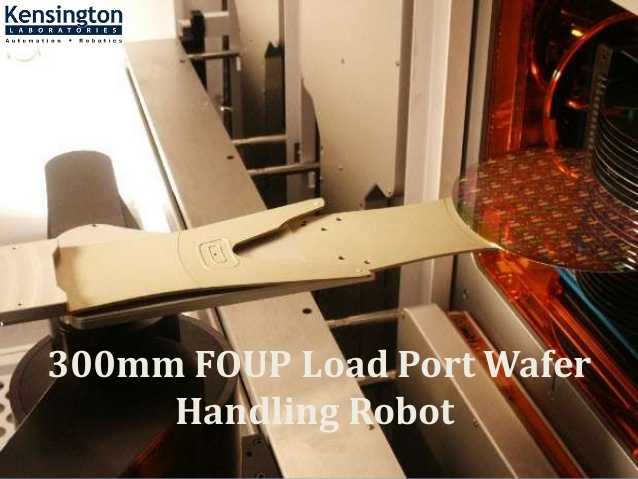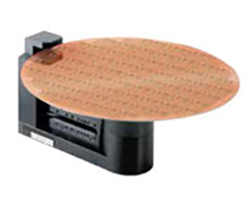All About Wafer Handling Equipment
We know that the total productivity of the semiconductor is dependent on the industry of the robotic handling industry. AMAT Robot is making processes more accessible and more defined.
Wafer handling robots provide accuracy and are quick. Wafer handling robots help in bringing down the processing cost. So, the way in which the wafer handling equipment manufacturers see the efforts, they consider mechanical systems design with manipulated abilities, as well as of the advanced control schemes. Wafer handling equipment is made with deep analysis of the wielding task, simulation, mathematical modeling, and on-site experiments.
The wafer handling robots are used in the semiconductor equipment spectrum for numerous processes such as metrology systems, deposition systems, thermal processing systems, and many such systems.
Scams in the daily fab operations lead to semiconductor robot handling. In today's world, there is an increase in semiconductor operations and businesses; that's why innovative techniques and robots are made to fulfill the demands. Wafer handling robots and semiconductor front end require good precision and robustness for the mechanical coercion.
The prevailing trait of the manipulating task carried out by the robotic handling systems is that they have to give a straight-line motion of the center of the wafer. The straight-line motion is collateral with the central axis of the equipment, i.e., either a FOUP, an open cassette, a process chamber. Even though that straight-line motion extends in the horizontal plane, but in the right sense, the linear motion may prolong its hand for the synchronized vertical move to look out for equipment placement robotic arm slope. It also shows out that the move to the center of the wafer remains within proximity of the equipment' centerline, considered to be less than 0.5 mm with the path and less than 0.05 mm at the extremity point. There are many other strategies for performing the manipulative task.
In addition to the stiffed straight-line motion, there is another motion, which is termed as gross motion. It is proposed to transfer the wafers among the different strategy positions, which are the front stances of equipment. It is conceded by the walls of the environment as it keeps the massive tolerance between the robotic system and the wall constraints. That is why this motion needs less accuracy. In order to boost the performance of the robotics handling system, there is a need for a really fast gross motion and it should be set with the constraints by the need to hold wafer on the end-effector. Therefore, combining the uneasy straight-line motion and lower inaccuracy, the gross motion is regarded as one of the vital issues in the design and holds over the high performance of the robot handling systems. It is seen in many cases that the striking combination of the fine and gross motions, confer more to the lessening of the wafer exchange time and less to boost the velocity and acceleration of the split motions.
The branching scenario is the most used scenario of the robotic arm architecture. The modules are arranged in such a way that their longitude passes through a single point that coincides with the center of rotation of wafer handling robots. That's why earlier, the radial scenario was preferred to have the constraints of the motion control technologies instead of coping with the needs for favorable and economical placement of the equipment set by the automation. So, it needs to be connected with the gross motions, which is specifically defined in the cylindrical space. TRZ robots, also known as the regular radial robots are seen to be faulty in serving the "in-line" equipment, there are some exceptions in a skew manner. Lastly, it needs the end-effector that would try to enter the equipment at an angle, however the wafer held by the end effector changes to a straight line coincident with the y-axis of the equipment. From here we can say that when encountering the straight-line motion of the wafer, the adaptation of the end-effector alterations makes the wafer rotation equal to the straight line segment length. The strategy mentioned typically supports the FOUPs and Wafer Cassette Mapping as they set up little constraints over the rotation of the end-effector. It also allows the end effectors rotation in the straight-line motion. So, if the wafers are required to be set up into separate located off-radial chambers along with the arbitrary assimilation of the notch, they should be taken with the dependent angular offsets of the notch from the wafer aligners.
The limitation of the skew handling is its lack of addressing the cases in which the end-effector is required to either move towards the cases being addressed or in between located pins in the process chamber. The present FOUP addressing doesn't allow the edge gripping end-effectors to enter to the FOUP in a skewed manner because of the intervention of the front part of the edge gripper with the FOUP backside. This statement doesn't apply to the designed edge grippers, but it holds onto entire edge-gripping devices.
source:https://articles.abilogic.com/435928/all-about-wafer-handling-equipment.html




Comments
Post a Comment